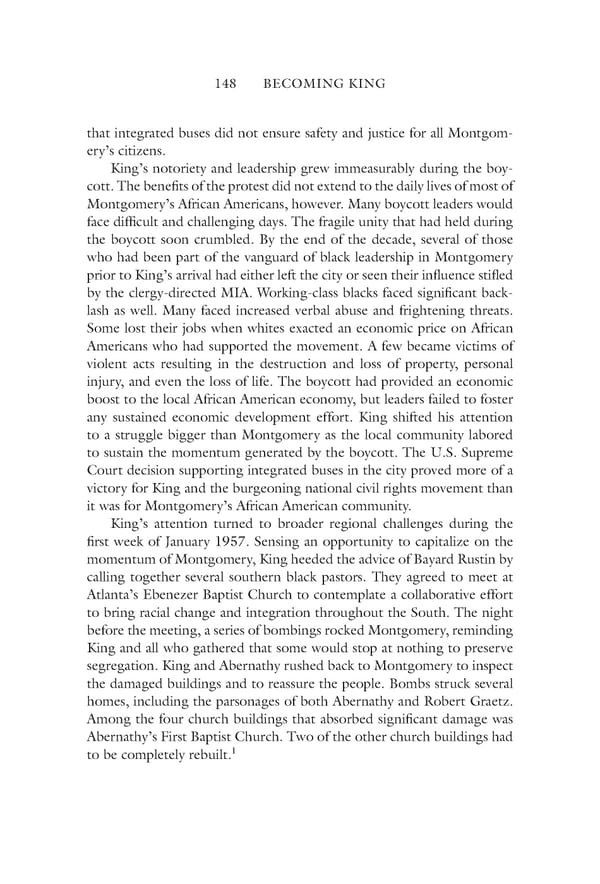148 BECOMING KING that integrated buses did not ensure safety and justice for all Montgom- ery’s citizens. King’s notoriety and leadership grew immeasurably during the boy- cott. The benefits of the protest did not extend to the daily lives of most of Montgomery’s African Americans, however. Many boycott leaders would face difficult and challenging days. The fragile unity that had held during the boycott soon crumbled. By the end of the decade, several of those who had been part of the vanguard of black leadership in Montgomery prior to King’s arrival had either left the city or seen their influence stifled by the clergy-directed MIA. Working-class blacks faced significant back- lash as well. Many faced increased verbal abuse and frightening threats. Some lost their jobs when whites exacted an economic price on African Americans who had supported the movement. A few became victims of violent acts resulting in the destruction and loss of property, personal injury, and even the loss of life. The boycott had provided an economic boost to the local African American economy, but leaders failed to foster any sustained economic development effort. King shifted his attention to a struggle bigger than Montgomery as the local community labored to sustain the momentum generated by the boycott. The U.S. Supreme Court decision supporting integrated buses in the city proved more of a victory for King and the burgeoning national civil rights movement than it was for Montgomery’s African American community. King’s attention turned to broader regional challenges during the first week of January 1957. Sensing an opportunity to capitalize on the momentum of Montgomery, King heeded the advice of Bayard Rustin by calling together several southern black pastors. They agreed to meet at Atlanta’s Ebenezer Baptist Church to contemplate a collaborative effort to bring racial change and integration throughout the South. The night before the meeting, a series of bombings rocked Montgomery, reminding King and all who gathered that some would stop at nothing to preserve segregation. King and Abernathy rushed back to Montgomery to inspect the damaged buildings and to reassure the people. Bombs struck several homes, including the parsonages of both Abernathy and Robert Graetz. Among the four church buildings that absorbed significant damage was Abernathy’s First Baptist Church. Two of the other church buildings had 1 to be completely rebuilt.
 Becoming King: Martin Luther King Jr. Page 168 Page 170
Becoming King: Martin Luther King Jr. Page 168 Page 170